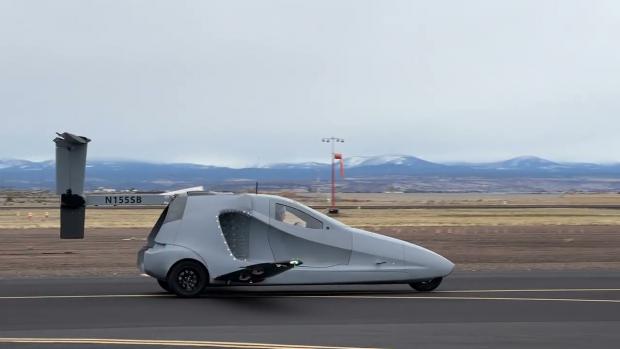
Breaking News
 [Off Grid Build] DIY Rotary Sieve (Trommel) For Separating Stone from Earth (Making Gravel)
[Off Grid Build] DIY Rotary Sieve (Trommel) For Separating Stone from Earth (Making Gravel)
 Exposing the Venezuela Regime Change Scam - with Richard Grove
Exposing the Venezuela Regime Change Scam - with Richard Grove
 California just passed a shocking law to grab your idle Bitcoin
California just passed a shocking law to grab your idle Bitcoin
 Scientists say recent advances in Quantum Entanglement...
Scientists say recent advances in Quantum Entanglement...
Top Tech News
 Kawasaki's four-legged robot-horse vehicle is going into production
Kawasaki's four-legged robot-horse vehicle is going into production
 The First Production All-Solid-State Battery Is Here, And It Promises 5-Minute Charging
The First Production All-Solid-State Battery Is Here, And It Promises 5-Minute Charging
 See inside the tech-topia cities billionaires are betting big on developing...
See inside the tech-topia cities billionaires are betting big on developing...
 Storage doesn't get much cheaper than this
Storage doesn't get much cheaper than this
 Laser weapons go mobile on US Army small vehicles
Laser weapons go mobile on US Army small vehicles
 EngineAI T800: Born to Disrupt! #EngineAI #robotics #newtechnology #newproduct
EngineAI T800: Born to Disrupt! #EngineAI #robotics #newtechnology #newproduct
 This Silicon Anode Breakthrough Could Mark A Turning Point For EV Batteries [Update]
This Silicon Anode Breakthrough Could Mark A Turning Point For EV Batteries [Update]
 Travel gadget promises to dry and iron your clothes – totally hands-free
Travel gadget promises to dry and iron your clothes – totally hands-free
 Perfect Aircrete, Kitchen Ingredients.
Perfect Aircrete, Kitchen Ingredients.
 Futuristic pixel-raising display lets you feel what's onscreen
Futuristic pixel-raising display lets you feel what's onscreen
Switchblade flying car gets production redesign after first flight

Based on what was learned in the course of that flight, its makers have now unveiled the design for the production version of the vehicle.
Should you be unfamiliar with the Switchblade, it's a fixed-wing flying car being developed for the civilian market by Oregon aviation company Samson Sky.
In ground mode, the three-wheeled two-seater moves along the road much like any other car, with its wings folded in beneath its body, and its tail folded into the rear. The prototype is already capable of reaching the targeted top ground speed of 125 mph (201 km/h).
Upon reaching an airport or airstrip, the Switchblade switches into flight mode. As you might have guessed, this involves folding out its wings and extending its tail. The whole process takes just three minutes.
The idea is that the vehicle will then take off and fly to another runway near its destination, just like a regular small private plane. Its hybrid power system runs on regular 91-octane gasoline, and should ultimately deliver up to 500 miles (805 km) of range from a full 36-gallon (125-l) fuel tank.
Upon landing at the destination runway, the Switchblade will retract its wings and tail, then proceed to the precise destination via the ground.
Last November, at the Grant Country International Airport in Moses Lake, Washington, the prototype made its first flight. The aircraft reached an altitude of 500 ft (152 m), and circled the area for six minutes before landing back at the airport. Plans call for it to be capable of attaining an altitude of 13,000 ft (3,962 m).
That brings us to the new design, which was guided by the performance of that test vehicle.
Most notably, the Switchblade's two rear thruster propellers now fold into the body when not in use – they were previously hard-mounted in scoops on the sides of the vehicle. According to Samson Sky, wind tunnel tests show that this and other streamlining measures should allow the aircraft to reach its targeted 160-mph (257-km/h) cruising airspeed.
The new design is also intended to make the Switchblade easier to build. This is an important consideration, as the company claims to already have approximately 2,300 reservations from buyers in 57 countries. Pricing should start at US$170,000 a pop.
"Everything we do is with the mindset of how we are going to produce thousands of Switchblades, to meet the incredible demand we have," says Samson Sky CEO, Sam Bousfield.



